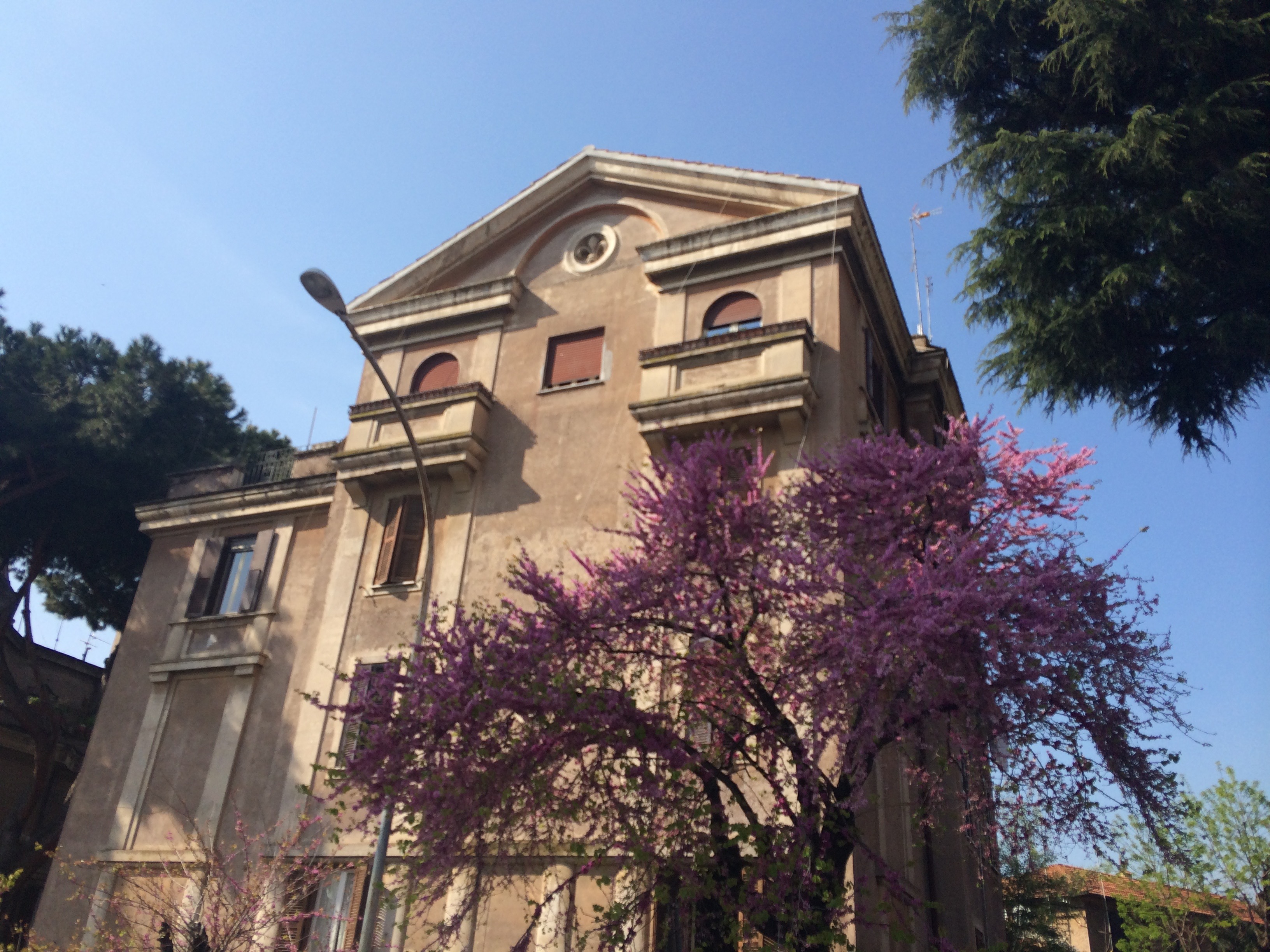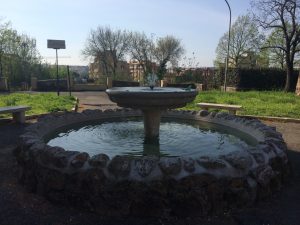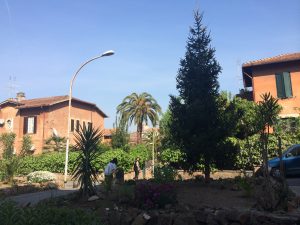

Living in Trastevere is one of the best parts about attending John Cabot University. It has an undeniable charm and wonderful atmosphere. Although Trastevere has everything you may want or need, I would also advise students to branch out and explore some of Rome’s other neighborhoods, the ones that might not be in all of the guide books. It is important to learn about some of the interesting spots that many people haven’t heard much about. While I was a student, I had the opportunity to learn about the fascinating quartiere Garbatella, Rome’s “garden-city.” I first visited this unique part of town in one of my classes called Researching Rome, taught by Professor Clough Marinaro. I had been intrigued by this phenomenon of a garden-city in the midst of the chaos of Rome, and after reading many articles about it, I was happy to see what it was really like.
I first visited this unique part of town in one of my classes called Researching Rome, taught by Professor Clough Marinaro. I had been intrigued by this phenomenon of a garden-city in the midst of the chaos of Rome, and after reading many articles about it, I was happy to see what it was really like.
Situated in the industrial district of Ostiense, Garbatella was primarily designed to house railway workers and dockworkers built by the Istituto Autonomo Case Popolari (the Institute of Public Housing) between 1920 and 1923. During this time, the neighborhood expanded so much that it had the highest population density in the city. Despite the construction of larger multi-functional “super-blocks” of communal-style housing, the architecture and planning of Garbatella created a sense of community and a distinct Roman identity.
The area still has a vintage feel, with vibes stemming from the '20s.
I remember climbing what felt like endless winding stairs at the start of the neighborhood until finally reaching large blocks of houses, each with their own patches of carefully planted and lavishly decorated gardens. The winding roads were bordered on each side with purple hydrangeas and overflowing bougainvillea. I stopped in front of one house painted different shades of oranges, yellows, and browns, with green shutters and trim. I snuck past the gate and entered a large courtyard completely covered with white hibiscus.
This is a neighborhood built around gardens, rather than gardens built into a neighborhood.
I kept walking up and then at the top of the hill I found Piazza Benedetto Brin. I sat on a marble bench there and rested. There was no commotion, only loudly chirping birds hovering over the cypress trees.
An easy commute from John Cabot by bus is all it takes to get to this small refuge of serenity in a bustling city.

Alexa Vujaklija (Shearer)
Class of 2015
Communications major
Grew up in the United States, Germany, The Republic of Georgia, Russia, and Bulgaria




